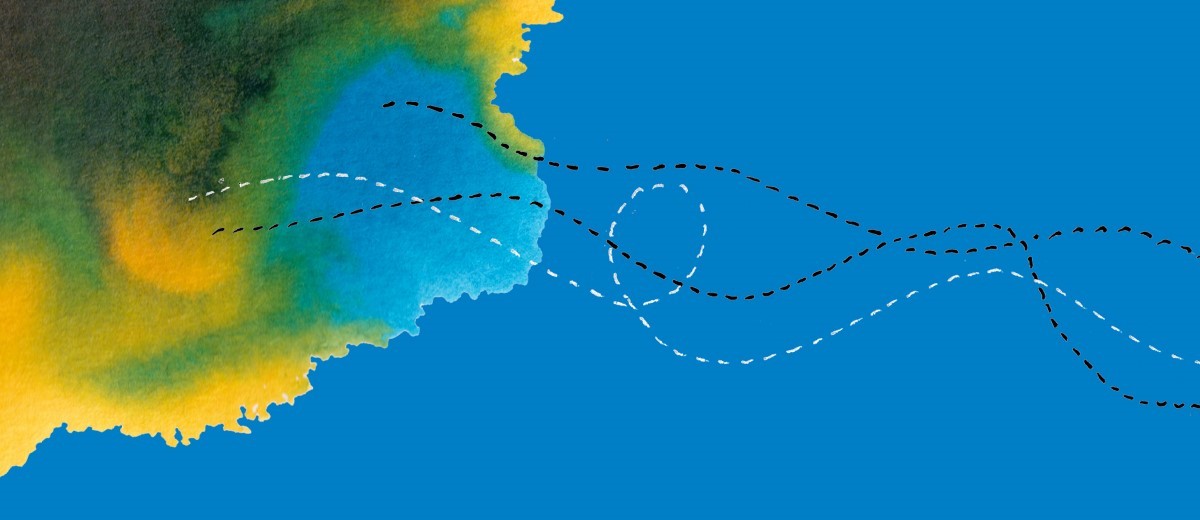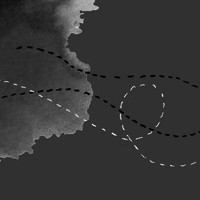Geographic Origins
The Union of India is in South Asia. It is bordered by the Arabian Sea and Pakistan to the west, China, Nepal and Bhutan to the north, and Burma, Bangladesh and the Bay of Bengal to the east.
History of Immigration and Settlement
The first known Indian immigrants arrived in South Australia in the late 1830s. They were brought to the colony by a Mr Bruce, who had lived in Calcutta before settling in South Australia.
In 1840 Edward Gleeson, the founder of Clare, established a sheep station on the Hutt River. He employed Indians who had previously worked for Mr Bruce and brought out several more to work as shepherds.
The copper-mining town of Burra is connected with Indian settlement in South Australia. In the early 1840s Indians working for pastoralist James Stein named the creek next to his property Burra-Burra, Hindustani for Great-Great, because the creek is the biggest in that section of the northern Mount Lofty Ranges.
Indians were also among the ‘Afghan’ camel men who came to South Australia during the nineteenth century to transport supplies and primary produce in the colony’s arid interior. They were termed ‘Afghans’ by colonial authorities because of their similar, non-Anglo-Saxon appearance, turbans and loose, flowing garments. The camel men were actually from a range of areas including Afghanistan; India; Sind; Peshawar, Baluchistan and the Punjab in present-day Pakistan; Iran; Egypt and Turkey. For further information see Afghan entry.
After 1901 Indians were prohibited from entering Australia by the Immigration Restriction Act, better known as the White Australia Policy. While Indian migrants were recognised British subjects, between 1901 and 1956 Australian government policy did not permit Indian settlers to become Australian citizens.
In 1947 there were 594 South Australians who had been born in India or Ceylon. Most of these people were ‘Anglo-Indians’, people of English or mixed Indian and English descent. Many of them immigrated to Australia as a result of the end of British rule in 1947. By 1961 there were 1,342 Indian-born South Australians.
A considerable number of Anglo-Indians came to Australia in 1964 under the General Migration Program. The 1901 Immigration Restriction Act was relaxed in the late 1960s. By 1971 there were 2,234 Indian-born South Australians. The act was abolished in 1973.
Since 1973 Indians have emigrated to South Australia from various states of India and from former British colonies including Malaysia, Singapore, Indonesia, Fiji, Mauritius, the West Indies, Taiwan, Hong Kong, South Africa and East Africa. Most immigrated for employment reasons. Others came to South Australia as a result of discriminatory social policies in their countries of origin. More recently, many have migrated from India to Australia to study often staying permanently. Among those born in India and living in South Australia in 2011, the vast majority had migrated in the previous decade.
Indian South Australians are employed in a wide range of occupations. They have settled throughout the metropolitan area and in rural areas that include Whyalla, Renmark, Barmera and Murray Bridge.
Community Activities
The Indian Australian Association of South Australia was established as the Indian Club by the Joshua, Mazumdar and Nayak families in 1967. The club aimed to provide informal social interaction for the small number of Indian families and post-graduate students in Adelaide, and to promote an understanding of Indian culture among the wider community. Dr S. Nayak was the club’s first convener. A simple constitution was written in 1968.
The India Club grew steadily over the following years. It established a five-member executive committee and a new constitution in 1971. In 1974 the club expanded to become an association. It changed its name to the Indian Australian Association of South Australia to reflect its role as both a cultural and a friendship organisation, open to people of Indian descent and those with an interest in Indian culture. The executive committee was expanded to 12 positions.
In the late 1970s the association began meeting at North Adelaide Primary School on Sunday afternoons. Members met to read Indian magazines and newspapers and share afternoon tea. The association began publishing a monthly newsletter, and organising social outings, barbecues and cooking classes. It promoted Indian culture at local multicultural festivals. The association is now permanently located in premises at Blarney Avenue, Broadview.
Highlights of the association’s year include Diwali; Independence Day; Republic Day; Australia Day and the association’s Annual Ball.
Diwali is a Hindu festival. Although the association is open to people of all faiths, most Indian South Australians are Hindus. Diwali is also known as the Festival of Lights. It falls in the Hindu month of Kartika which usually coincides with October or November. Diwali commemorates the triumph of good over evil as celebrated in a number of regional myths. Hindu South Australians attend Ganesha Temple in Oaklands Park, visit relatives and light up their homes to welcome all. The association honours Diwali with a party.
India became independent from Great Britain on August 15, 1947. The Indian Australian Association’s annual festivities for Independence Day on August 15 include a social gathering and cultural performances.
Republic Day is on January 26. It commemorates India becoming a republic in 1951, and is celebrated with a party and cultural performances. The celebration of Republic Day is often combined with festivities for Australia Day.
Friends, members of other cultural groups and local dignitaries are invited to share the association’s Annual Ball.
The association sponsors tours by Indian musicians and other performers and hosts gatherings in honour of visiting officials, sportspeople and academics.
The annual Indian Food and Cultural Festival, Mela, has been a key highlight of the association’s activities in recent years. Here the local Indian community and businesses showcase their talents, share their culinary skills and the richness of their culture with the wider community. Mela began on a small scale in 1992 at Fullarton Park Community Centre grounds but expanded greatly in the following years. It has since been held at various venues across Adelaide including Bonython Park, Elder Park and the Adelaide Showgrounds. In 2005 Mela became a day/night event for the first time.
The Indian Australian Association of South Australia has staged an exhibition at The Forum, the Migration Museum’s community access gallery. Naya Desh, New Homeland, was on display between November 11, 1990, and January 29, 1991. Naya Desh presented information about Indian immigration to South Australia, Indian dance and music, and displays of traditional pottery, sculpture, paintings, crafts and photographs.
The majority of Indian South Australians belong to the Hindu faith. Hindu South Australians first worshipped together in the 1970s. The main festivals of the year for Indian Hindu South Australians besides Diwali are Maha Shivarati and Sarasvati Poojah.
Maha Shivarati falls in February. It is a three-day festival which honours Lord Shiva. Hindu South Australians hold all-night vigils with meditation, prayers and offerings to the Destroyer and Regenerator.
Sarasvati Poojah is conducted in October. It is the worship of Sarasvati, Goddess of Learning and companion of Brahma. Hindu South Australians make offerings at the temple and have their books blessed. They stage cultural performances. The day after Sarasvati Poojah young children are taught the alphabet for the first time.
A number of Indian South Australians are Sikhs, Disciples. The Sikh religion was founded in what is now Pakistan in the late fifteenth and early sixteenth centuries by the first of ten Gurus or Teachers, Guru Nanak. Guru Nanak aimed to combine elements of Hinduism and Islam.
Sikh belief is set down in the Guru Granth Sahib, a holy book that includes the teachings of the ten Sikh Gurus. Sikhs accept one God. They believe in reincarnation, the rebirth of the soul after death, and karma, the theory that behaviour during life determines the animal or human that the soul enters in the next life. Sikhs are forbidden to worship religious images.
According to the teachings of Gobind Singh, the tenth Guru, baptised male Sikhs traditionally abide by the Five Ks as a sign of their faith. The five Ks are: Keshas, uncut hair; Kangha, a comb they must carry to groom themselves; Kara, a steel bangle worn as a symbol of the omnipresence of God; Kachha, shorts worn as a sign of chastity; and Kirpan, a sword carried to represent a Sikh’s resistance to evil. Most young male Sikhs in western societies no longer wear shorts or carry a sword.
Male Sikhs’ names include the name Singh, lion, while those of females include Kaur, princess, as an affirmation of their devotion to God.
The Sikh faith has no organised priesthood. Any Sikh who has passed through Pahul, confirmation, may lead worship as a Granthi.
Adelaide’s Sikh community began gathering for worship in private homes in the mid-1970s. The Sikh Society of South Australia was incorporated as an official body in 1981. In 1988 the society established a Gurdwara, temple, in Northfield. Other Gurdwaras are at Allenby Gardens and in the Riverland town of Glossop.
Gurdwaras are large rooms, unfurnished except by a canopy-covered table which houses the Adi Granth, the holy book, during worship. Men sit on one side of the room, women on the other. Everyone in the Gurdwara must cover their heads as a mark of respect to God. Sikh worship consists of: japji, morning prayer; shabads, devotional songs which are accompanied by a vaja, harmonium and a tabla, drum; ardas, calling upon God for peace and goodwill; vaak, the random reading of prayers to provide guidance for the day; announcements; and the distribution of parshad, a sweet semolina pudding. The gathering is concluded with a communal vegetarian meal.
The main Sikh holy days are Vaisakhi; the Sikh New Year on April 13 which also marks the beginning of the Sikh Khalsa or brotherhood, and the birthdays of the ten Gurus. These days are marked by speeches on relevant themes and a social gathering.
Organisations and Media
- Indian Australian Association of South Australia: publishes I.A.A.S.A. News, a bi-monthly newsletter
- Club India International South Australia Inc.: publishes Gupshup, a monthly newsletter
- Hindu Society of South Australia Inc. ‑ Ganesha Temple: publishes Turiya Marga, a quarterly newsletter
- The Sikh Society of South Australia Inc. ‑ Gurdwara Temple
- Riverland Singh Society Inc. ‑ Gurdwara Temple
- Punjabi School Adelaide
- Riverland Punjabi School
- 5EBI-FM Radio Program
Statistics
The 1981 census recorded 2,485 Indian-born South Australians.
According to the 1986 census there were 2,642. 2,498 people said that they were of Indian descent. Twenty-five people stated they were of Sikh descent.
The 1991 census recorded that there were 2,979 Indian-born South Australians. 4,197 people said that their mothers were born in India, and 4,598 that their fathers were.
According to the 1996 census there was an increase of 29.4 per cent over the ten years from 1986 to 1996, to 3,419. The second generation for this birth-place group numbered 2,390.
The 2001 census recorded 3,688 Indian-born South Australians, while 5,058 people said that they were of Indian descent.
The 2006 census recorded 6,827 Indian-born South Australians, while 9,238 people said that they were of Indian descent.
The 2011 census recorded 18,739 Indian-born South Australians, while 20,387 people said that they were of Indian descent.
The 2016 census recorded 27,592 Indian-born South Australians, while 33,069 people said that they were of Indian descent and 460 people said that they were of Anglo Indian descent.
Auhl, I, The Story of the ‘Monster Mine’: The Burra Burra Mine and Its Townships 1845–1877 (Burra: District Council of Burra Burra, 1986)
Dennis, B, Ethnic Development in South Australia (Adelaide: Good Neighbour Council, 1974)
Indian Australian Association of South Australia, ‘India: General Information’, pamphlet prepared by the I.A.A.S.A., 1991
Indian Australian Association of South Australia, ‘Naya Desh (New Homeland) Exhibition’, pamphlet prepared by the I.A.A.S.A., 1991
Jupp, J (ed.), The Australian People: An Encyclopedia of the Nation, Its People and Their Origins, Second Edition, (Cambridge University Press, 2001)





Add your comment